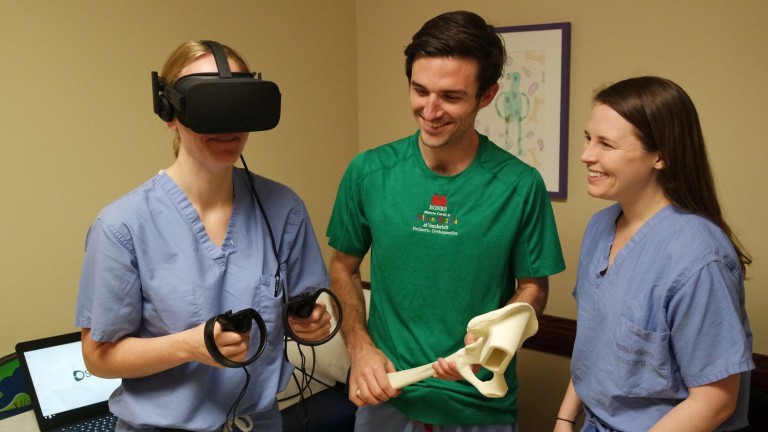Virtual-reality training platforms are expanding into some of America’s top medical residency programs.
Some background: Orthopedic training requires a 14-year commitment after high school to become an independent surgeon. But even then some surgeons can come out ill-prepared. “The experience of the trainee, especially in residency and fellowship, is completely dependent upon chance,” says Jonathan Schoenecker, an assistant professor of orthopedics at Vanderbilt University, one of the schools adopting an instructional VR program.
The news: Eight US residency programs—Columbia, UCLA, Harvard, and Vanderbilt among them—have committed to bring Osso VR, a virtual-reality teaching program, into their schools. “The expansion of virtual reality training into residencies is a major milestone,” says Justin Barad, Osso VR’s CEO. “It is an acknowledgement that there are training gaps that exist that are not adequately being met by more traditional technologies and methods.” A similar tool made by ImmersiveTouch has found its way into the residency program at Johns Hopkins.
Learning in VR: Virtual reality is increasingly being used for training in a variety of industries. Walmart even used headsets to prepare associates for last year’s Black Friday rush.
Why it matters: With robots taking learning opportunities away from young doctors, new tools like these are needed. “This will not only greatly enhance the ability to produce skilled orthopedic surgeons, but also reduce the time of training and increase the capacity to assess skill,” says Schoenecker. “Most importantly, this should lead to safer clinical practice.”

